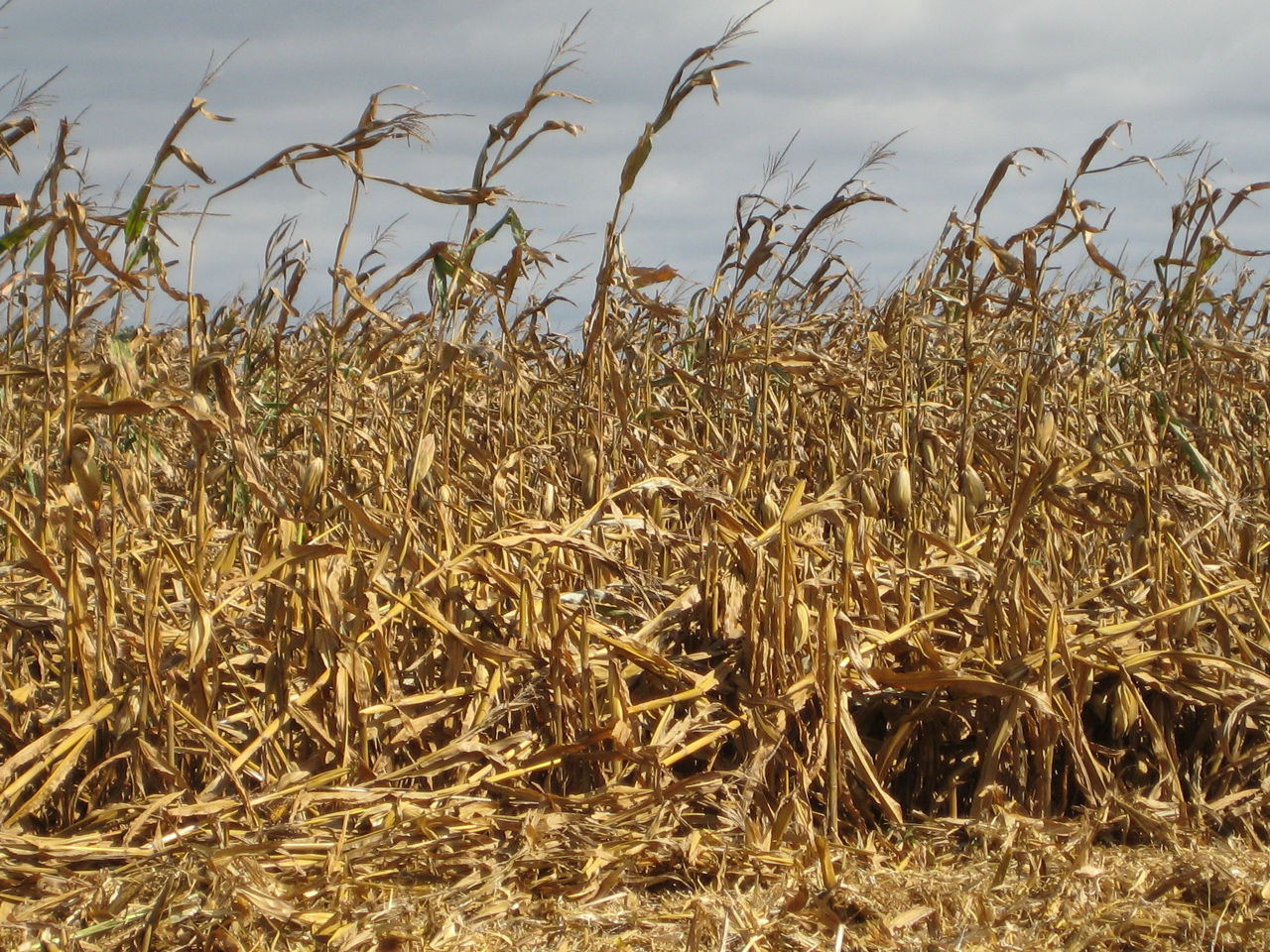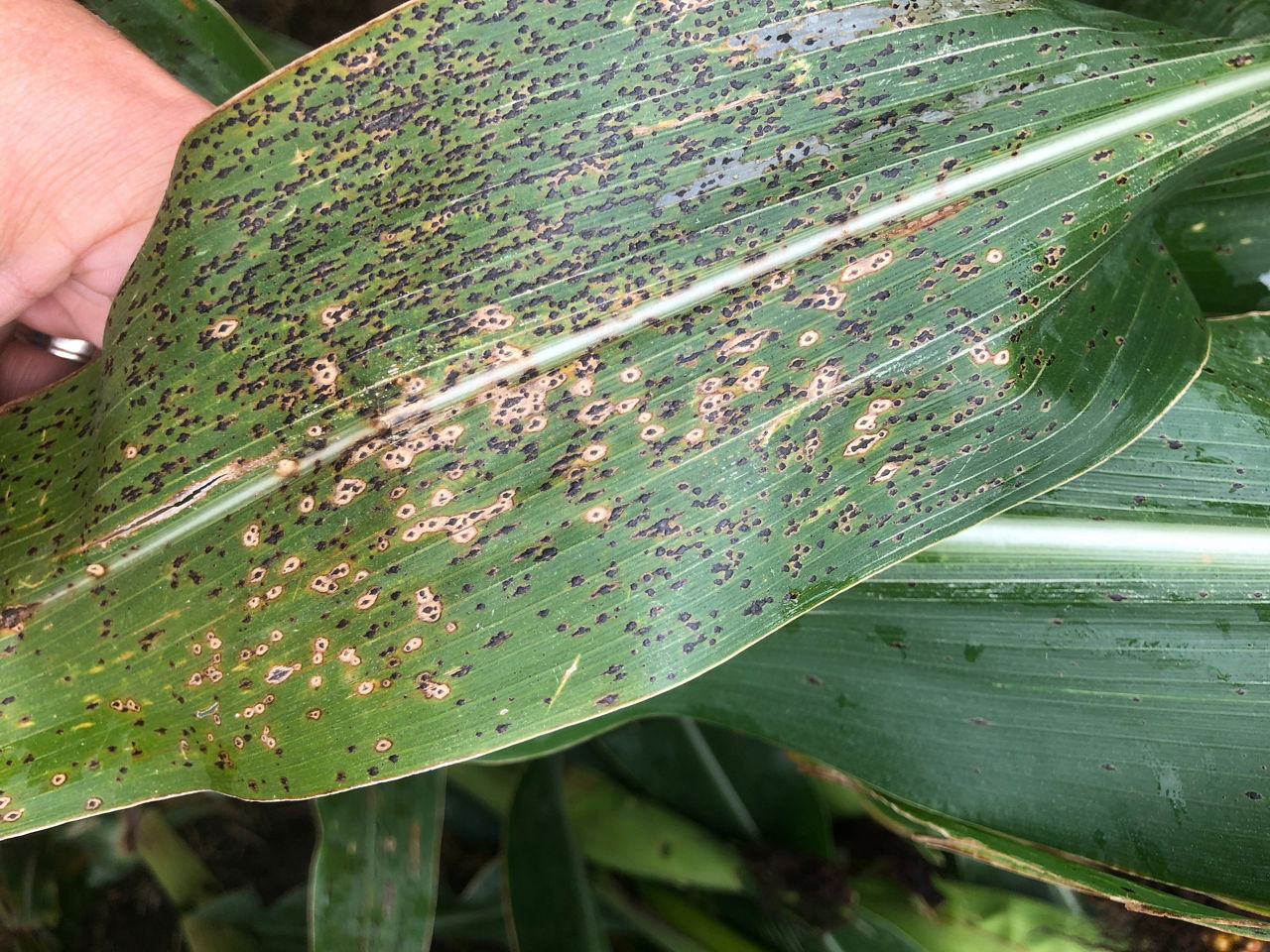5 MIN READ
Identifying Tar Spot in Corn
August 25, 2025
Key Points
- Tar spot is a foliar disease of corn that has been spreading across multiple Midwest states and Ontario in recent years, which has the potential to negatively impact yield.
- Disease development is favored by cool, humid conditions with extended periods of leaf wetness.
- If tar spot is suspected, a tissue sample should be sent to a laboratory for analysis to confirm the presence of tar spot.
An Overview of Tar Spot
Tar spot is a foliar disease of corn caused by the fungus Phyllachora maydis. It was first confirmed in the United States in 2015 in Illinois and Indiana. In recent years, it has emerged as an economic concern for corn production in much of the Midwest of the United States and portions of Ontario, Canada. Initially, tar spot appeared to be a minor cosmetic disease with minimal impact to corn yield. The first significant yield loss events were observed in 2018, with a dramatic increase in the distribution, prevalence, and severity of the disease in the years immediately following. As of 2025, tar spot had expanded its range as far west as Nebraska, Kansas, and South Dakota to as far east as Pennsylvania, Georgia, and Florida. With the limited history of tar spot in the US, much remains to be learned about the long-term economic importance of this disease. Continued research is needed to determine how the environment influences its development, where yield losses are most likely to occur, and to develop best management practices.1,2,3 To see a current distribution of tar spot for 2025, see Crop Protection Network.
Disease Background and Conditions That Favor Development
Although tar spot is relatively new to the US, it is common in Mexico and Latin America. Tar spot disease development is favored by mean daily temperatures of 64 to 73 °F (18 to 23 °C) for 30 days, relative humidity of less than 90% for 2 to 3 weeks, and at least 7 hours of leaf wetness due to rain, fog, dew, or overhead irrigation. The fungus that causes tar spot, P. maydis, is an obligate pathogen that requires a living host to grow and reproduce. It is capable of overwintering on infected corn residue on the soil surface, providing inoculum that can potentially infect corn crops in the following year(s). How the amount of infected residue on the soil surface in a field affects disease severity the following year is unknown. Wind-driven rain can aid in spreading the disease. The fungus appears to be able to spread very rapidly over long distances when weather conditions are favorable, based on the rapid spreading of tar spot in 2018 and 2019. It is not known to be seedborne.
Similar to other foliar diseases of corn, the impact of tar spot depends on the timing and severity of the infection. If leaves are infected during the grain fill period, the amount of sugar available to the plant may not be adequate, so plants may stop filling ears prior to physiological maturity. This could result in an overall loss of kernel weight and yield. Also, if photosynthesis is reduced due to the loss of leaf area, corn plants may respond by re-allocating sugars from the stalk to the developing grain, cannibalizing the stalks and potentially resulting in poor standability and lodging (Figure 1).1,2

Tar Spot Symptoms
The symptoms of tar spot are distinctive and look like specks of tar on the leaf. P. maydis produces small, raised, round to irregularly shaped black structures called stromata. These structures can be found on both the upper and lower surfaces of a corn leaf, as well as on leaf sheaths, husks, and tassels. Symptoms begin as oval to irregular, bleached to brown lesions on leaves, in which black spore producing structures called ascomata form (Figure 2). Lesions protrude from the leaf surface, giving affected leaves a rough or bumpy feel. Tan to brown lesions with dark borders surrounding ascomatum can also develop. These are known as "fisheye" lesions. In Latin America, where tar spot is more common, fisheye lesions are also associated with another fungus, Monographella maydis, that forms a disease complex with P. maydis known as the tar spot complex. Although fisheye lesions have been observed in the US, the presence of M. maydis has not been confirmed. Fisheye lesions may potentially be related to the genetics of the corn product, the genetics of the tar spot fungus, the environment, or some unknown factor. In any case, the cause of fisheye lesions observed in North American tar spot outbreaks is currently unknown; however, research on this disease is ongoing.1,2
Structures associated with other fungal diseases can be confused with the stromata formed by tar spot. Lesions can densely cover the leaf and may resemble rust fungi pustules. Lesions may coalesce to cause large areas of blighted tissue, which can be mistaken for saprophytic fungal growth on dead leaf tissue. However, unlike saprophytes or rust, tar spot cannot be rubbed off.

Potential Yield Loss Due to Tar Spot
There has been a wide range of yield losses reported due to tar spot during the brief history of the disease in the US. This wide range is most likely a function of the timing of the infection and its severity through the course of the growing season. Reported losses have been from zero bushels per acre to as high as 50 bu/acre, as observed by various university extension pathologists.2 Yield losses that have occurred are usually a function of reduced ear weight, poor kernel fill, and kernels germinating on the ear (known as vivipary). The quality of corn silage can also be negatively impacted by tar spot infections due to reduced moisture, decreased digestible components, and less stored energy. The production of mycotoxins has not been associated with tar spot infections.2
Tar Spot Management
Proper diagnosis and early detection are crucial for successful management of the disease. Fields should be monitored in order to help track this disease and determine if management tactics are warranted. If foliar symptoms are present, stalk quality should be monitored to determine harvest timing. Fields with high productivity and high nitrogen fertility seem to experience the greatest disease severity in affected areas, as suggested by research on P. maydis in Latin America. The data indicates a correlation between high nitrogen application rates and tar spot severity.2 Additionally, the recently developed Crop Risk Tool may help growers predict the risk of tar spot being present in a corn field. This research-based predictive model is available at https://connect.doit.wisc.edu/cpn-risk-tool/
Corn product selection. Corn products that are currently grown in the US Corn Belt have been found to have various levels of tolerance to tar spot; however, none of these corn products have been identified as having elevated levels of resistance. Ask your local seed dealer or extension office for information on specific corn product recommendations.
Cultural practices. Two of the most common practices to help reduce disease inoculum include tillage and crop rotation. Using tillage to incorporate the residue may help reduce the spread of inoculum early in the season, since the fungus is known to overwinter on infested corn residue. Similar to other fungal diseases of corn, rotation to a different crop can also help to reduce the amount of inoculum that might be available for the next corn crop.
Fungicide application. Research results to date indicate that a single application of a fungicide applied within the tasseling (VT) to silking (R1) growth stages is most likely to provide a positive return on investment compared to other application timings. Applications made early in the season (V6 growth stage) have provided little economic benefit.3 A second application may be warranted if development of the disease continues, but additional yield protection may depend on future weather conditions and the susceptibility of the corn product to tar spot or other fungal diseases.
Delaro® Complete fungicide and Delaro® 325 SC fungicide are both labeled for suppression of tar spot in corn. For more information about these products, please visit https://www.cropscience.bayer.us/crop-protection/catalog?productType=Fungicide or contact your retailer. Fungicide application should begin when disease first appears and continue at 7 to 14-day intervals if environmental conditions persist that favor continued disease development.
Sources
1Quinn, D. and Telenko, D. 2022. Tar spot of corn: What to know and new research. Purdue University Extension, Pest and Crop newsletter. https://extension.entm.purdue.edu/newsletters/pestandcrop/article/tar-spot-of-corn-what-to-know-and-new-research/
2Telenko, D., Chilvers, M., Kleczewski, N., Mueller, D., Plewa, D., Robertson, A., Smith, D., Tenuta, A. and Wise, K. 2020. An overview of tar spot. Crop Protection Network. CPN-2012. https://cropprotectionnetwork.org/publications/an-overview-of-tar-spot
3Telenko, D., Chilvers, M., Robertson, A., Tenuta, A., and Smith, D. 2021. Will a second fungicide be worth the cost for tar spot management? Crop Protection Network. CPN-2018. https://cropprotectionnetwork.org/publications/will-a-second-fungicide-be-worth-the-cost-for-tar-spot-management
Additional Resources
Robertson, A. 2025. Tar spot in central Iowa should not be a surprise. Iowa State University.
Tar spot in central Iowa should not be a surprise. | Integrated Crop Management
Web sources verified 07/28/25. 1211_132362